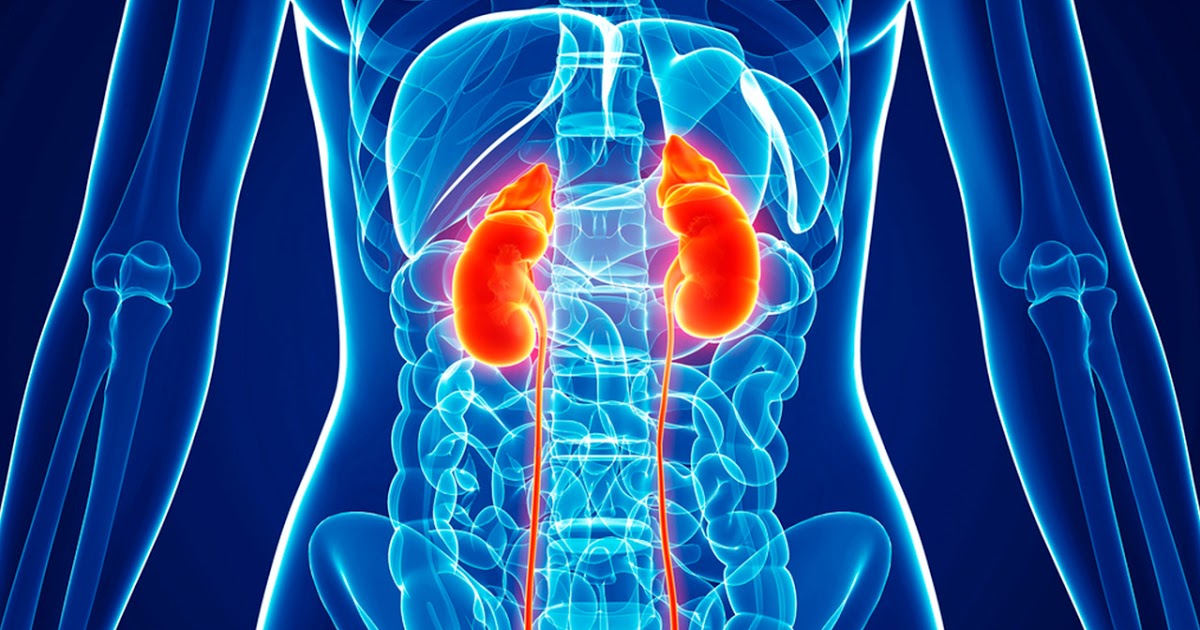Risk Factors, Complications, And Treatment Options For Multiple Myeloma
Multiple myeloma is a type of cancer that affects plasma cells, white blood cells that produce antibodies to help the body ward off infection. Plasma cells are primarily located in bone marrow but are found in other tissues and organs as well. Multiple myeloma occurs when plasma cells change and stop behaving normally. These abnormal plasma cells divide uncontrollably, creating more abnormal plasma cells. This uncontrolled cell growth causes cancer when the abnormal plasma cells take over the bone marrow and prevent normal blood cells from developing and functioning. The cause of multiple myeloma remains a mystery, but there are risk factors for developing the disease.
Age

Older adults are more susceptible to developing multiple myeloma. The disease is more common in individuals over sixty years old, and the average age at diagnosis is seventy years old. Very few cases, only two percent, occur in individuals under forty years old. This can be compared to the twelve percent of patients with leukemia, the eight percent of patients with non-Hodgkin's lymphoma, and the thirty-six percent with Hodgkin's lymphoma under the forty years old. Studies have shown the number of cases of multiple myeloma among seniors is rising, but the reason for this increase is unknown. Older patients are generally more difficult to treat than patients in their forties because older adults tend to develop multiple illnesses by the time they approach the eighty-year mark. Death from multiple myeloma tends to be more common among the elderly.
Race

Multiple myeloma is one of the most common blood-related diseases among African Americans. After lymphoma and leukemia, it is the third-most-common blood cancer. Multiple myeloma occurs twice as often among African Americans as it does among Caucasians, especially as age increases. This may be because Caucasian patients tend to respond to treatments for multiple myeloma whereas African American patients often do not. Multiple myeloma is also more common in North Africa, the Middle East, and the Mediterranean. Asian Americans are least likely to develop this type of cancer. Researchers have not yet discovered why race is a risk factor for developing multiple myeloma.
Gender

Men have a slightly higher risk of developing multiple myeloma than women do. However, in a study conducted by the American Association for Cancer Research, scientists found more women than men with multiple myeloma developed lesions; scientists believe the reason for this is based on genetics. For classification purposes only, researchers have noted men are more likely than women to have hyperdiploidy (a higher chromosome count). Women are more likely to have immunoglobulin, natural antibodies plasma cells produce. Although these differences are significant, researchers are unsure of their relationship to multiple myeloma. In both the number of the new cases of multiple myeloma and in deaths, men slightly outnumber women.
Workplace

Differences in the work environments of men and women may partially explain why men have a higher risk of developing multiple myeloma than women do. In a study conducted by Sweden's Organization for Working Environment, Occupational Safety, and Health, researchers found exposure to diesel exhaust increased workers' risk of developing multiple myeloma. Other studies have shown radiation from an atomic bomb blast also increases the risk of multiple myeloma, as does exposure to lower levels of radiation. Additional industries associated with higher rates of multiple myeloma include agriculture, leather production, petroleum, and cosmetology. Chemicals used in these industries known to increase the risk for multiple myeloma include insecticides, herbicides, petroleum products, plastics, asbestos, and heavy metals.
Obesity

Class 1 obesity is defined as having a body-mass index (BMI) of thirty to 34.9. Class 2 obesity is defined as having a BMI of thirty-five to thirty-nine. Individuals with class 3 obesity have a BMI of over forty. Harvard researchers believe any class of obesity is a risk factor for developing multiple myeloma and that obese individuals are at greater risk than those with a body-mass index between 18.5 and twenty-nine Their research also shows obesity is a greater risk factor for men than for women. Interleukin-6 is present in fat tissue, and researchers are looking into whether this and any other factors associated with obesity are linked to multiple myeloma.
Family History

Many patients with multiple myeloma do not have family members with the disease because the condition is so rare. However, multiple myeloma does run in some families, and if individuals have an immediate family member who has multiple myeloma, their chance of developing the disease is three to four times greater. Some studies have also shown families of African ancestry have a higher risk. Researchers have concluded there are some genetic factors linked to the disease, including loci (where genes are located on chromosomes). Doctors discovered this link in the 1920s with studies of family members affected by multiple myeloma. Other similar cases have arisen since then, and experts continue to explore the significance of genetic factors.
The Four Best Treatments For Multiple Myeloma

There is no cure for multiple myeloma, but there are treatment options available. Four of the best treatment options include chemotherapy, corticosteroids, stem cell transplants, and radiation. Chemotherapy is the injection of anti-cancer medication into the body to stop cell division and kill cancer cells. This treatment greatly affects the immune system, and some side effects include hair loss, pain, nausea, vomiting, and extreme weakness. Corticosteroids are usually taken before a stem cell transplant. Corticosteroids prevent white blood cells from crowding areas in the body that have been damaged by cancer cells. This makes transplants safer by limiting swelling and inflammation in these areas. A stem cell transplant is typically used in combination with other treatments. For example, a patient may first undergo chemotherapy and then take corticosteroids before receiving a stem cell transplant. If the cancer is localized, radiation therapy can be used to kill the cancer cells. Radiation treatment is usually given in low doses to minimize side effects.
Biological Therapy

Biological therapy is a method to treat many different diseases that utilize parts of living organisms, compounds that derive from living organisms, or human-made renditions of such compounds or substances engineered and produced in a laboratory. This type of therapy may directly or indirectly target an individual's multiple myeloma cancer cells to help with eradication. Some biological therapies work by hindering certain molecules that stimulate or help cancerous tumors progress and grow. Others are antibodies or drugs that stimulate the immune system to produce particular antibodies that can target specific cancer cells directly. Some biological therapies involve the use of donor blood components to help kill cancerous cells in multiple myeloma patients. Not only can biological therapies be used to help with targeting and killing cancer cells, but they can also be useful to help treat symptoms that occur as a result of cancer or side effects patients may experience as a result of other cancer treatments.
Targeted Therapy

A specific form of biological therapy called targeted therapy uses certain drugs to bind themselves to particular protein receptors present on a cancer cell's surface. For individuals affected by multiple myeloma, monoclonal antibody therapy is a targeted therapy option that targets the proteins on multiple myeloma cells and kills them. Monoclonal antibody therapy drugs are carefully produced from antibodies and are conceived in a laboratory setting. Another type of targeted therapy method that may be used in the treatment of multiple myeloma is called proteasome inhibitors. Proteasomes are a type of enzyme present in the cells that helps dissolve old proteins so they can be re-made into new proteins. This mechanism ensures there is not a toxic accumulation of certain proteins in the cell. Proteasome inhibitors are substances that inhibit this protein recycling process to induce toxic protein accumulation that effectively kills the cancer cells.
Anemia

Anemia is a manifestation in individuals affected by multiple myeloma. Around two-thirds of individuals diagnosed with multiple myeloma are affected by anemia at the time they are diagnosed with the disease. Multiple myeloma is characterized by an uncontrollable overgrowth of blood plasma cells in an individual's bone marrow. Plasma cells are important because they produce antibodies and white blood cells that help the body fight off infection and foreign pathogens. In healthy individuals, the bone marrow is able to produce sufficient numbers of both red and white blood cells because it keeps a delicate balance in place. However, this balance is thrown off in individuals with multiple myeloma because the white blood cells take up space and crowd out the marrow, which makes it difficult for the marrow to produce enough healthy blood-forming cells. Without a sufficient number of blood-forming cells, the marrow cannot produce red blood cells that function to carry oxygen to different tissues around the body. This mechanism results in anemia or a low red blood cell count in the individual. A standard blood test can identify low hemoglobin levels, and low red blood cell counts to confirm the presence of anemia.
Bone Pain And Thinning Bones

Bone pain and thinning bones are both symptoms and complications that occur as a result of multiple myeloma. Healthy individuals have bones that are constantly going through a process of bone breakdown and rebuilding. In order for the bones to stay strong, healthy, and functional, the patient's body has to be able to keep a balance between both of those processes. Osteoclasts are cells responsible for breaking down old bone, while osteoblasts are cells responsible for laying the matrix to form new bone. Multiple myeloma patients develop a negative imbalance of this process in the body. The cancerous myeloma cells produce a compound that signals their osteoclasts to break down old bone faster than usual. This malfunction means old bone is dissolved before the osteoblasts are able to replace it. This process causes bone pain and weakness in affected individuals that often progresses to multiple bone breaks or fractures. In addition, the process of bone breakdown that is in overdrive in an affected individual can cause their blood calcium levels to become too high.
Issues With Kidney Function

A common complication that occurs in individuals affected by multiple myeloma are issues with kidney function. Out of all patients diagnosed with the disease, between twenty and forty percent of them have a degree of kidney failure at their time of diagnosis. Multiple myeloma cells are known to produce abnormal proteins that tend to build up in the patient's bloodstream. Kidneys have a very critical component called glomeruli, which are many tiny filters the blood passes through for filtration. When the blood flows through the glomeruli, it then passes into the pipes or tubules in the kidney. The abnormal proteins in the blood are able to pass through the filters, but a problem occurs when the proteins enter the tubules. A protein in the tubules called Tamm Horsfall protein inappropriately binds with the abnormal proteins. Once linked, the combination of proteins become too large to pass through the tubules and leave the kidney through the urine. This malfunction causes the tubules to become blocked with these bound proteins. Blocked tubules do not allow the passage of fluid, causing damage to the kidney and its function. This damage results in an inflammatory response by the individual's immune system that exasperates the decreased kidney function.
